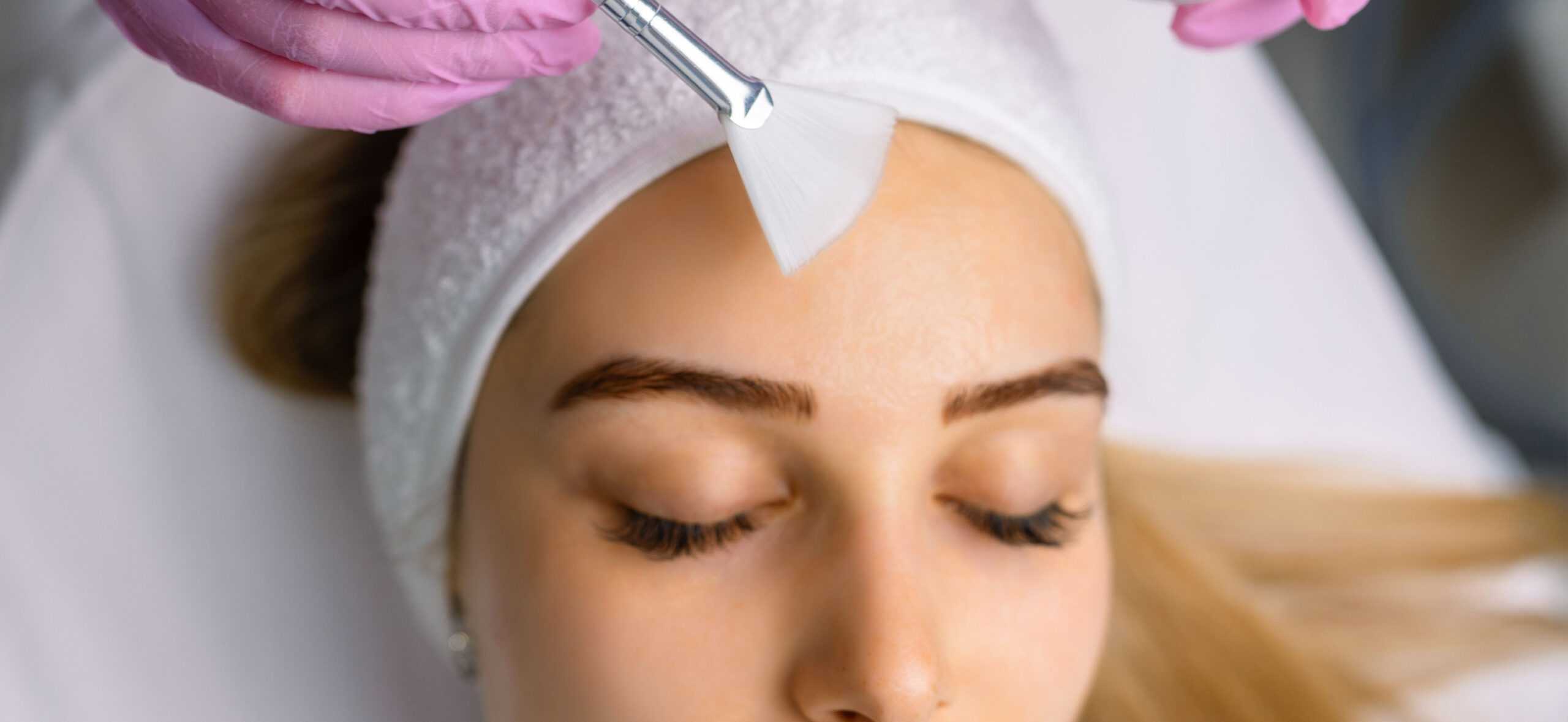
Choosing the Right Depth of Peel
By Aurora Solis
Chemical peels are among the most versatile and transformative treatments in esthetics. Withthe right peel, we can target acne, soften lines, fade pigmentation, and stimulate collagen allwhile customizing treatments for a wide range of skin concerns. Butthe power of peels comeswith responsibility: knowing how to select the correct depth for each client.
Not every client needs, or is even a candidate for, an aggressive peel. In fact, the art of peeling lies in understanding the spectrum: from superficial, progressive approaches to more aggressive, medium and deep treatments. Let’s walk through each depth, what it accomplishes, and when it’s most appropriate so you can confidently design treatment plans that are safe, effective, and tailored to your clients’ goals.
Superficial Peels: The Progressive Approach
Superficial peels (sometimes called “lunchtime peels”) include low concentrations of alpha hydroxy acids (AHAs) like glycolic, lactic, or mandelic acid, beta hydroxy acids (like salicylic), or enzyme-based blends. These work at the very top layer of the skin, the stratum corneum, providing gentle exfoliation with little to no downtime.
What they do:
- Smooth texture and brighten tone
- Unclog pores and help manage acne
- Boost hydration and cell turnover
- Prep the skin for stronger treatments later
Superficial peels are ideal for first-time peel clients, those with sensitive skin, or anyone looking for a glow without downtime. They’re also perfect for seasonal maintenance, acne management, and progressive treatment plans that build results over time.
Pro tip: Position superficial peels as part of a series. A package of 4–6 treatments spaced every 2–4 weeks can create impressive results while maintaining skin health.
Medium-Depth Peels: The Middle Ground
Medium-depth peels penetrate beyond the epidermis into the upper layers of the dermis. These often include higher-strength glycolic or TCA (trichloroacetic acid) peels, Jessner’s solutions, or blends designed for more noticeable resurfacing. They typically involve several days of visible peeling and require more recovery time than superficial treatments.
What they do:
- Address moderate photoaging and fine lines
- Lighten more stubborn pigmentation and melasma
- Smooth acne scarring and textural irregularities
- Deliver longer-lasting results than a superficial peel
Medium-depth peels are appropriate for clients with resilient skin who have specific concerns like advanced hyperpigmentation, acne scarring, or deeper wrinkles. These peels are often performed in the fall and winter months when sun exposure is limited, making them a great seasonal “reset.”
Pro tip: Prepping the skin is non-negotiable. A solid home care routine with sunscreen, pigment inhibitors (when necessary), and gentle exfoliants for several weeks before treatment will not only enhance results but also reduce the risk of complications like post-inflammatory hyperpigmentation.
Deep Peels: The Aggressive Option
Deep peels reach the reticular dermis and can involve high-concentration TCA or phenol. These are considered medical procedures and, in most cases, are performed under the supervision of a physician. Downtime can be significant, and the risk of complications is higher—but so are the results.
What they do:
- Dramatically soften deep wrinkles and advanced photoaging
- Resurface significant scarring and uneven texture
- Provide long-lasting results (sometimes years) compared to lighter peels
Deep peels are reserved for carefully selected candidates who understand the risks, downtime, and aftercare involved. They are not a routine esthetic treatment but may be appropriate for clients with severe photoaging or scarring who are working with a medical esthetics team.
Pro tip: As estheticians, our role may be to help clients prepare their skin for these treatments or guide them into maintenance care afterward, ensuring barrier repair and long-term health.
Building Smart Treatment Plans
When choosing peel depth, remember that more isn’t always better. A progressive approach often yields safer, more sustainable results for the majority of clients. Instead of thinking, “How much can I peel this client in one session?” shift toward, “How can I get this client where they want to be over time while protecting their skin?”
Here are a few guidelines:
- First-time clients: Start with superficial peels to build tolerance, evaluate response, and set the stage for deeper treatments.
- Skin of color: Stick to progressive options with gentle acids like mandelic or lactic to minimize PIH risk.
- Clients with big events: Opt for superficial peels—no downtime, guaranteed glow.
- Long-term correction: Combine progressive peels with medium-depth treatments as part of a structured plan, especially for pigmentation or scarring.
- Aggressive needs: Partner with a medical provider if deeper resurfacing is required.
Peeling is both a science and an art. The true mastery lies not in reaching for the strongest formula, but in selecting the right depth, at the right time, for the right client. By approaching peels with a progressive mindset and reserving aggressive options for carefully chosen cases, we uphold safety, deliver better outcomes, and reinforce our role as trusted skin experts.
As peel season arrives, remember: confidence comes from knowledge, and results come from thoughtful planning. Let’s continue to guide our clients wisely through the peel spectrum so every treatment becomes a step toward healthier, more radiant skin.












